driving Detroit
is the second section of'
Detroit/Torino: A Tale of Two Cities
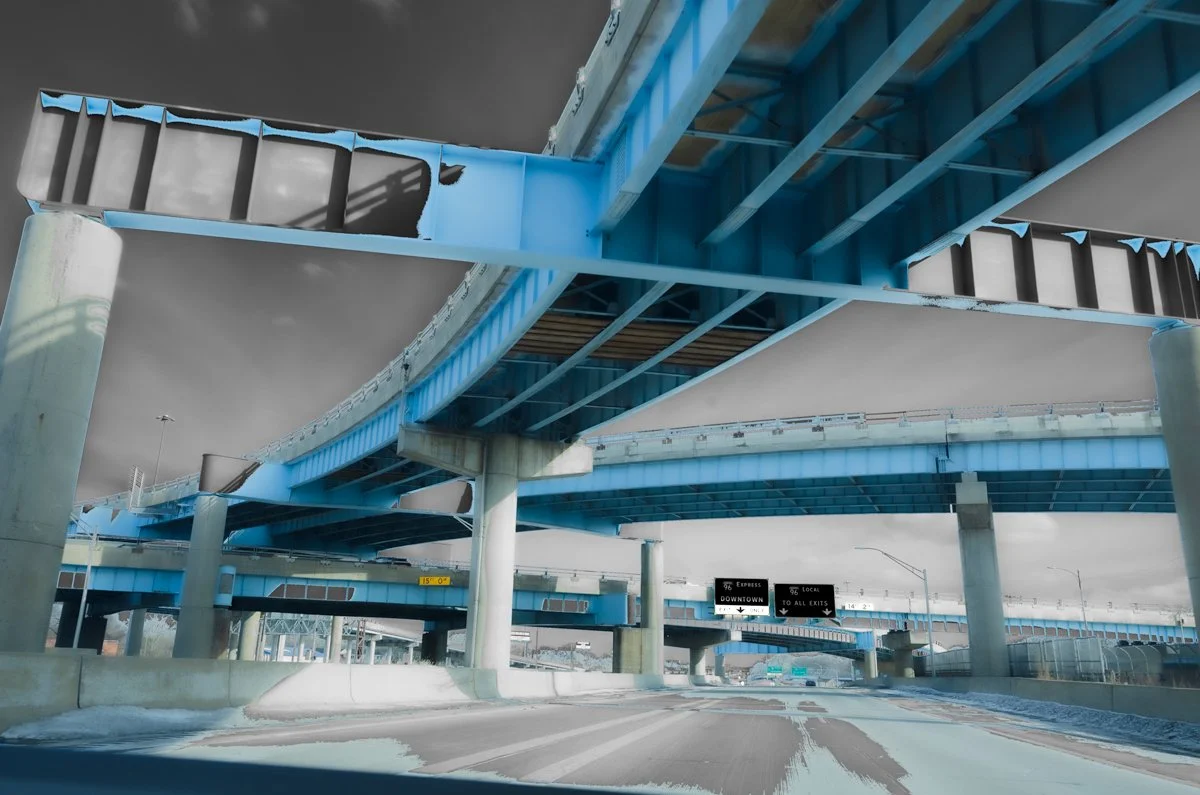
I-69 South, curvilinear fugue

I-94 South
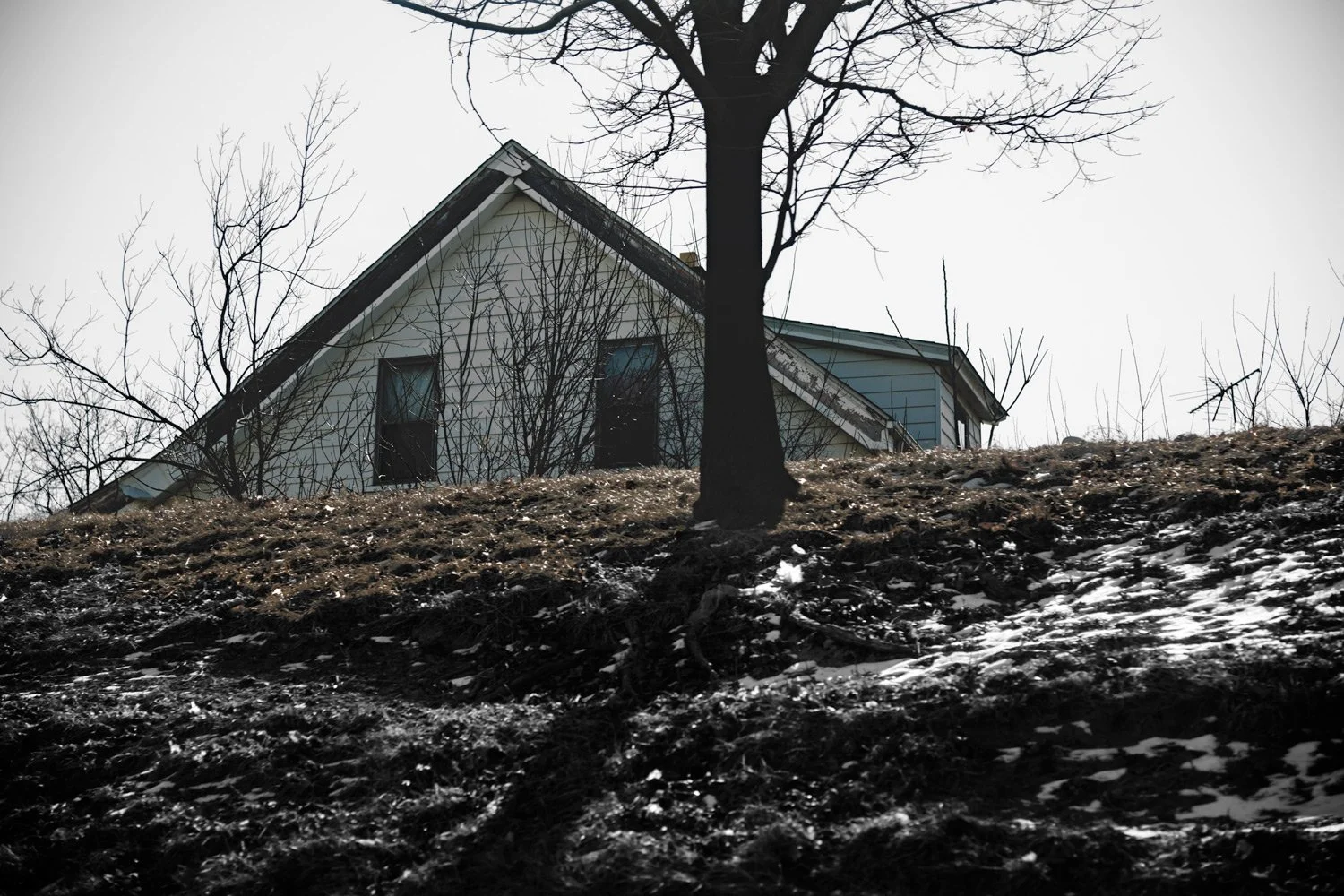
I-94 South, peeking
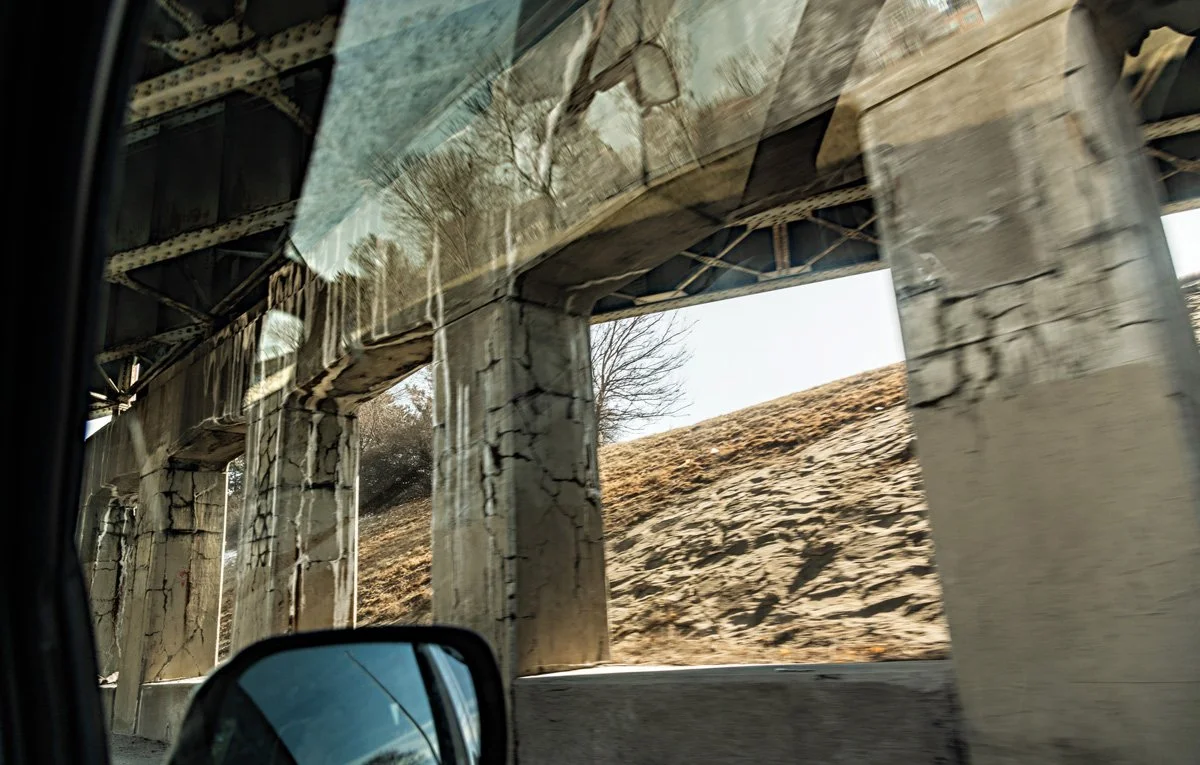
I-94 South, fresco?
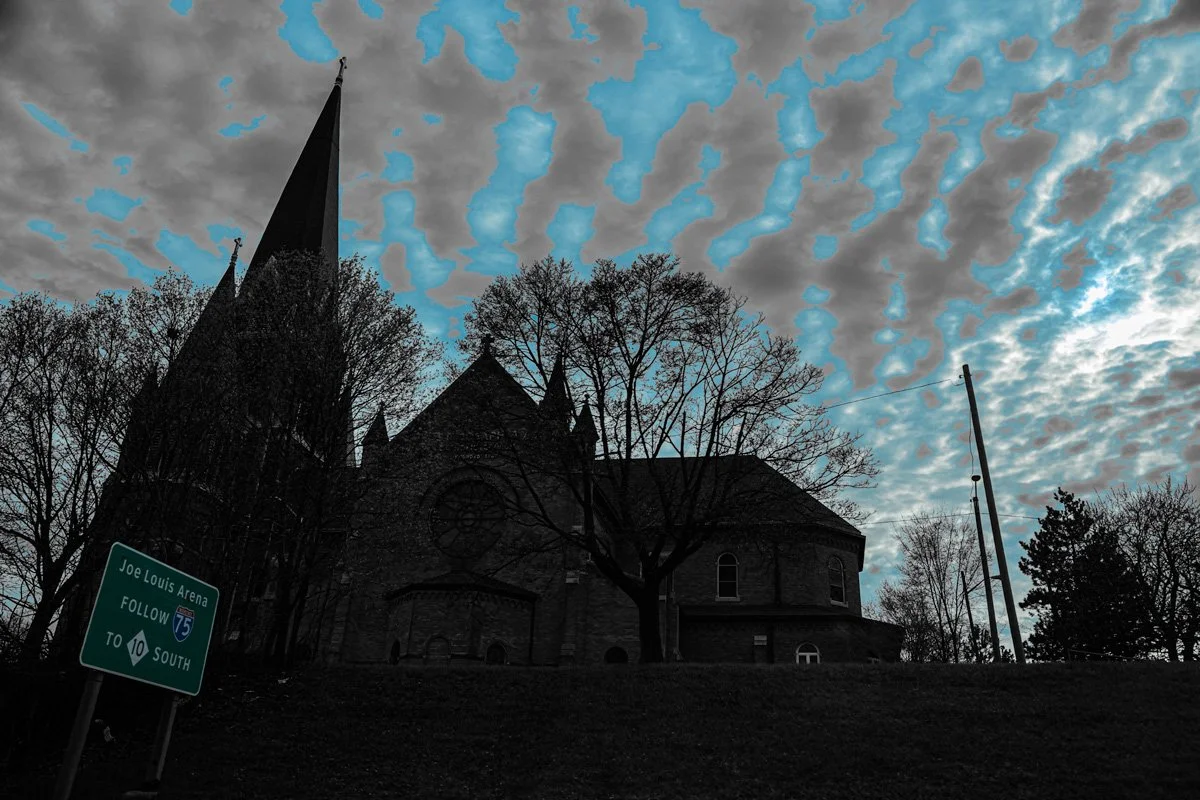
I-75 South, St. Josapath
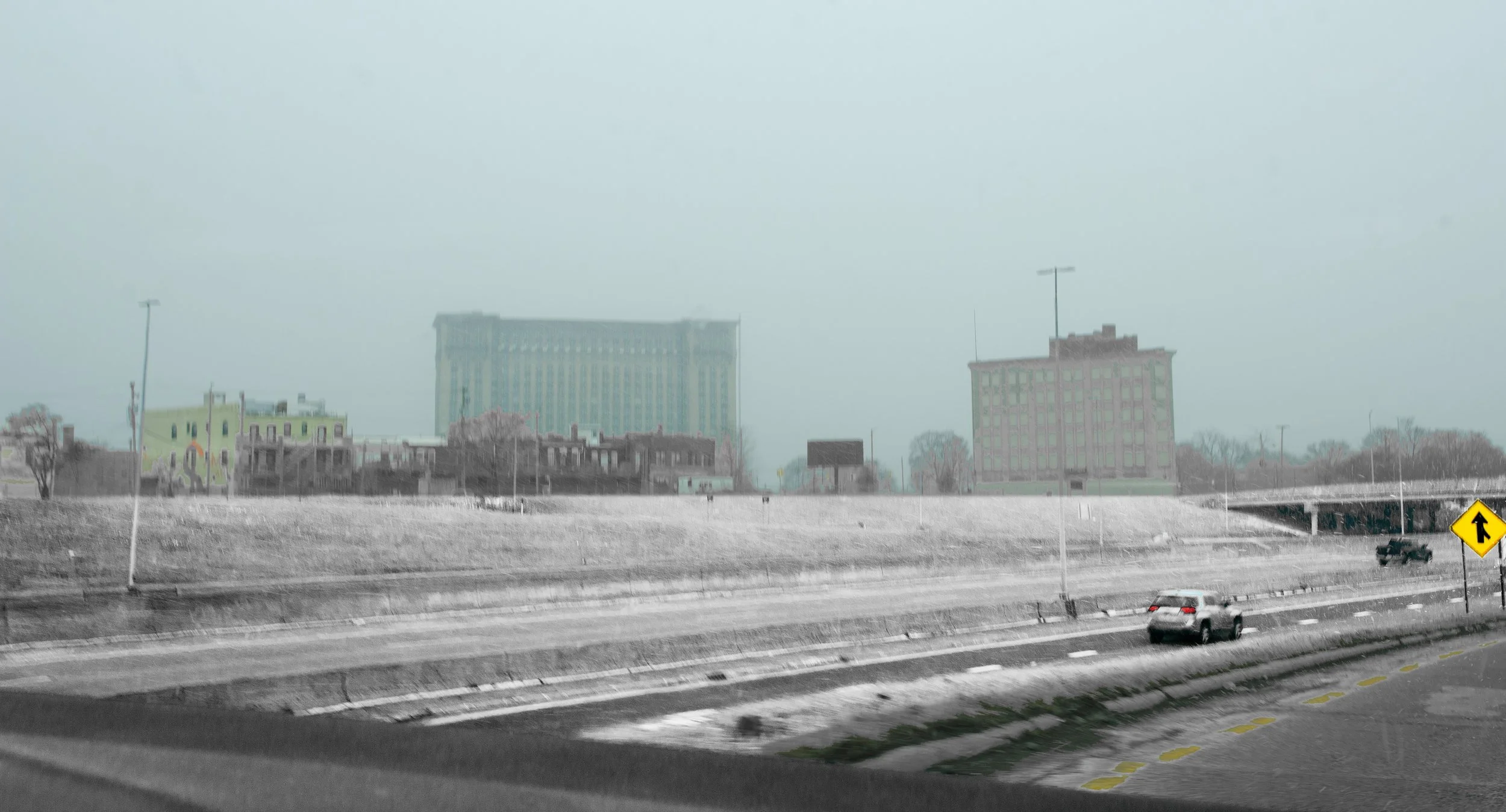
I-75 South from I-94 overpass

I-75 South, alternative?
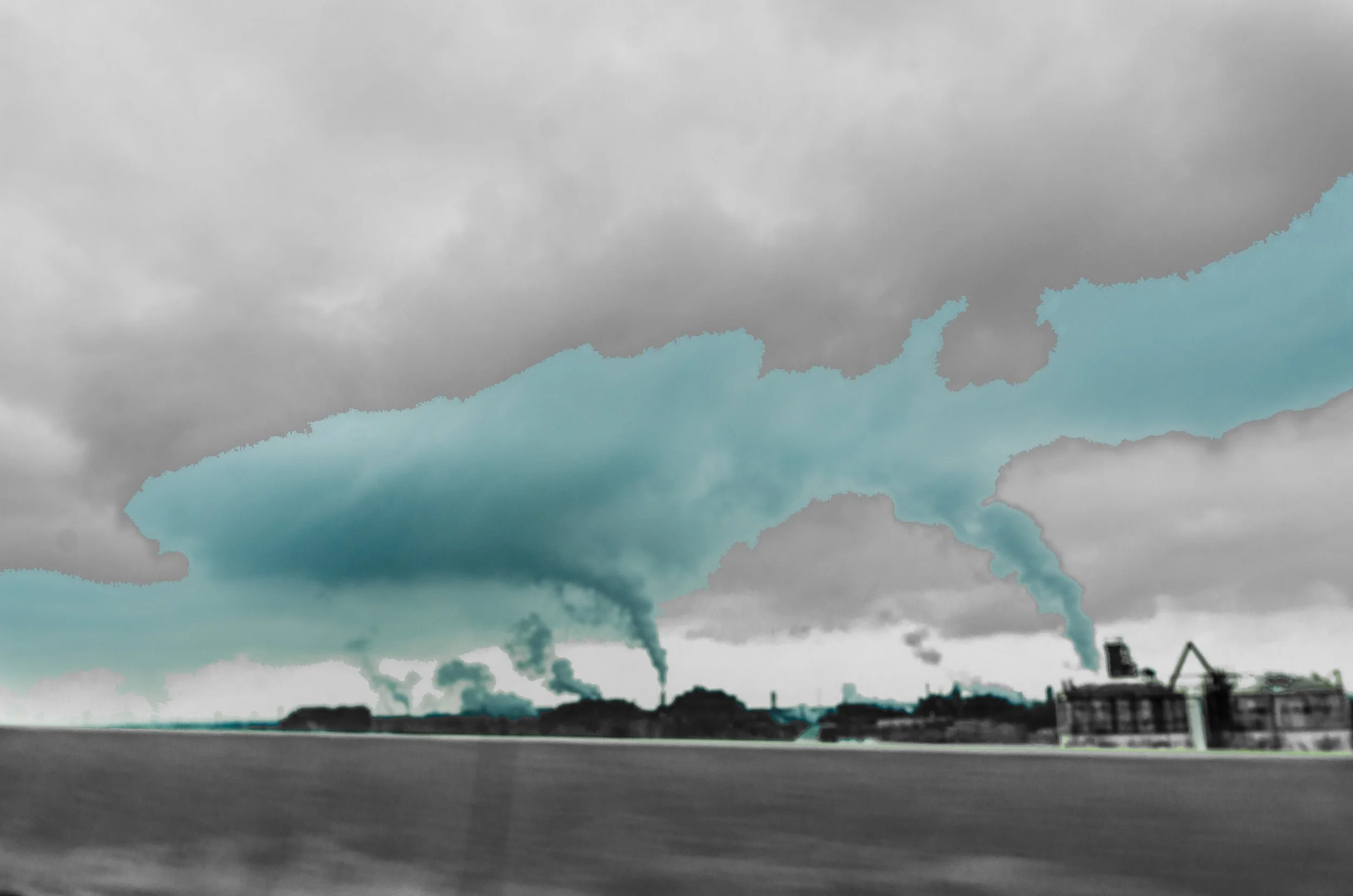
I-75 South, River Rouge
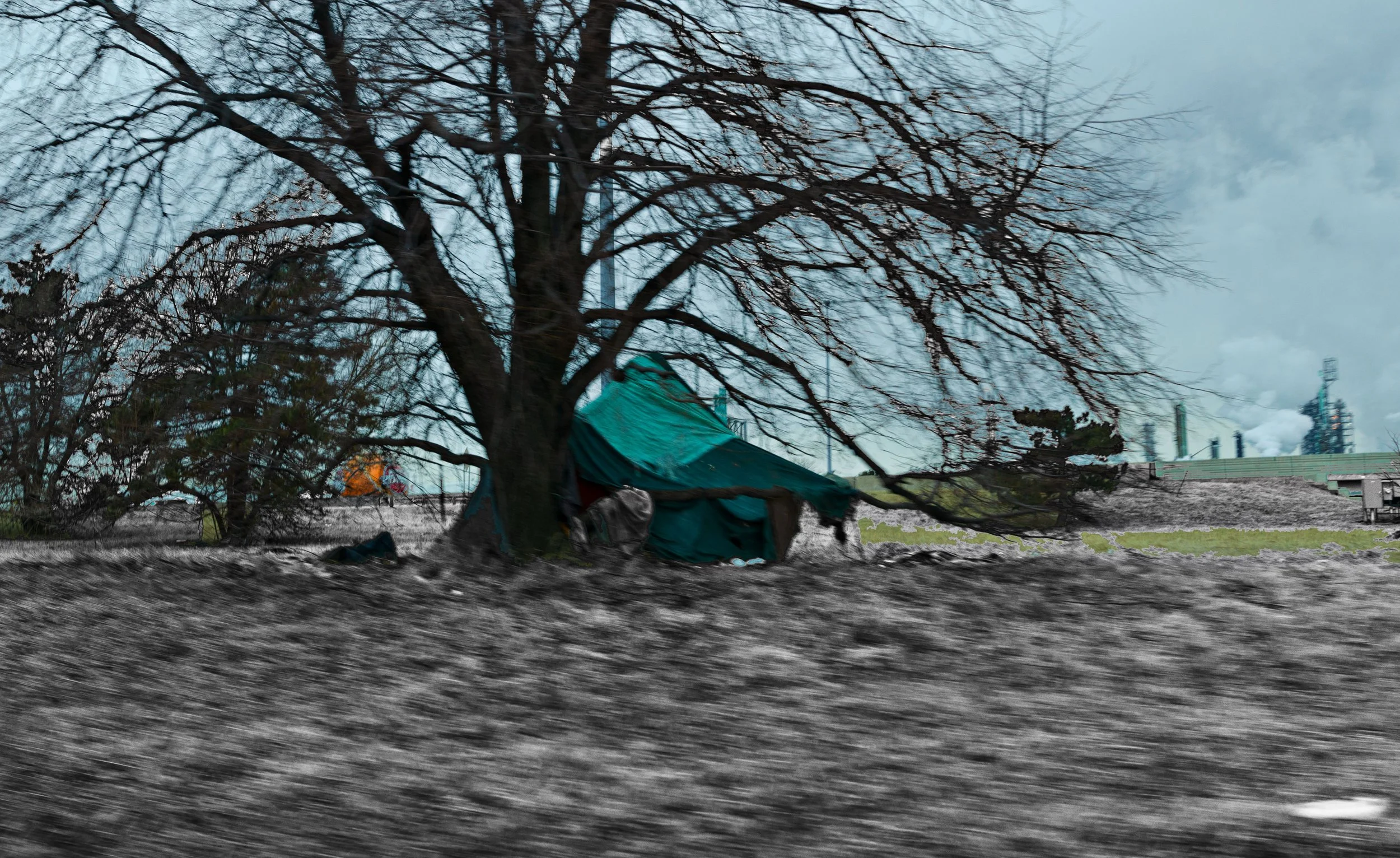
I-75 South, ramp to Schaeffer, makeshift dwelling

I-75 North, Zug island

I-75 North
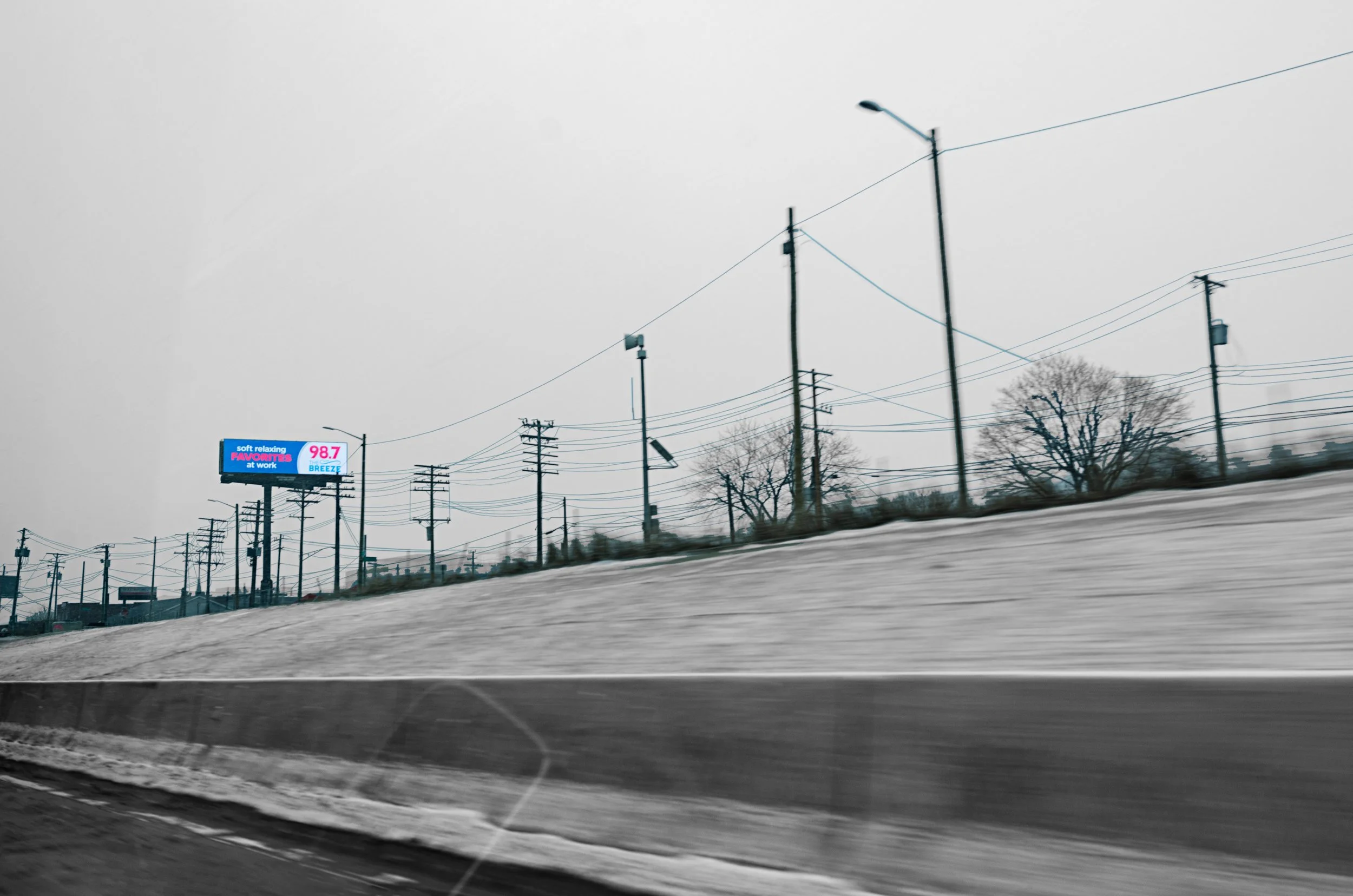
I-75 North

I-75 North, billboard
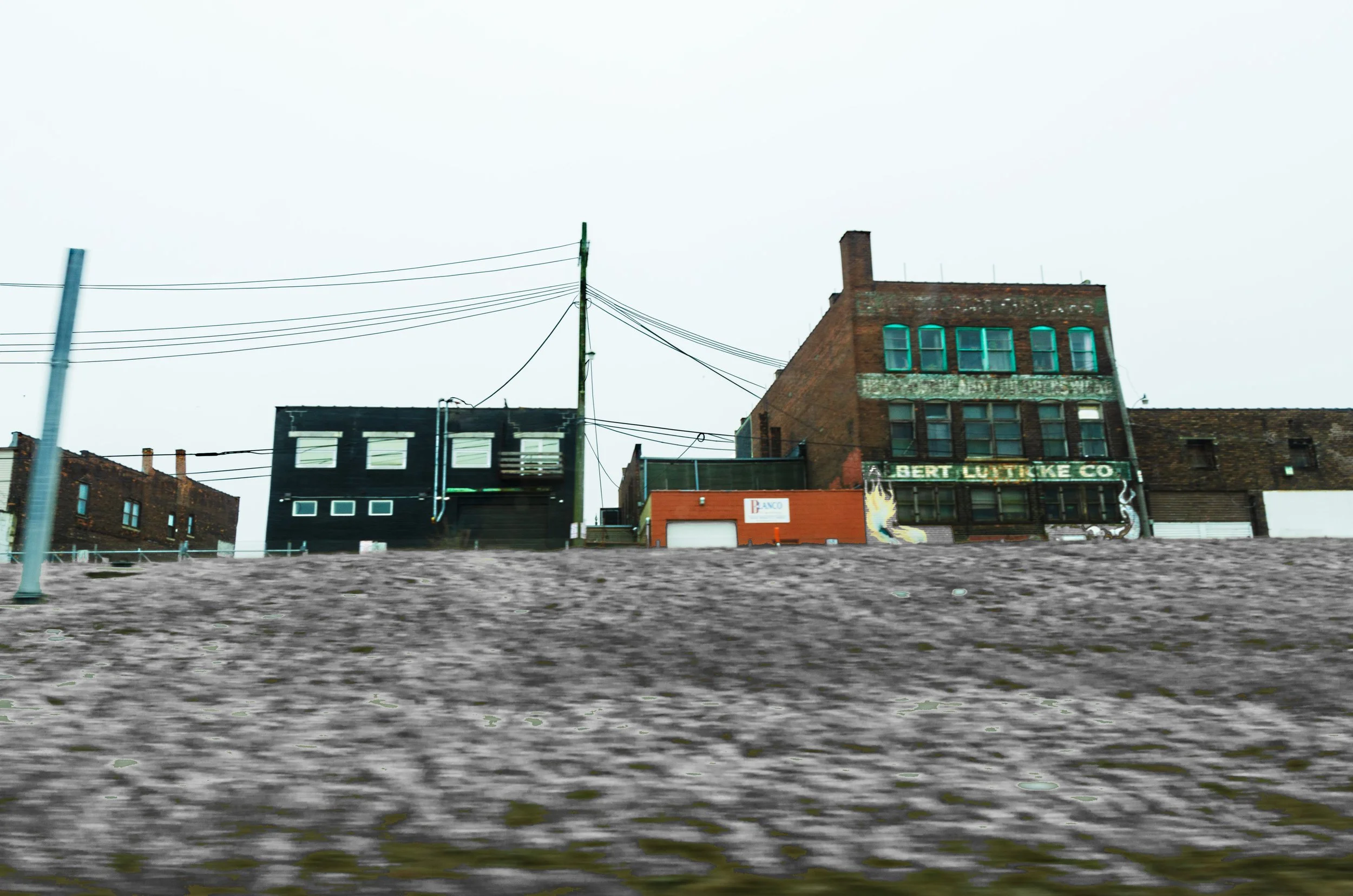
I 75 North, ghost town
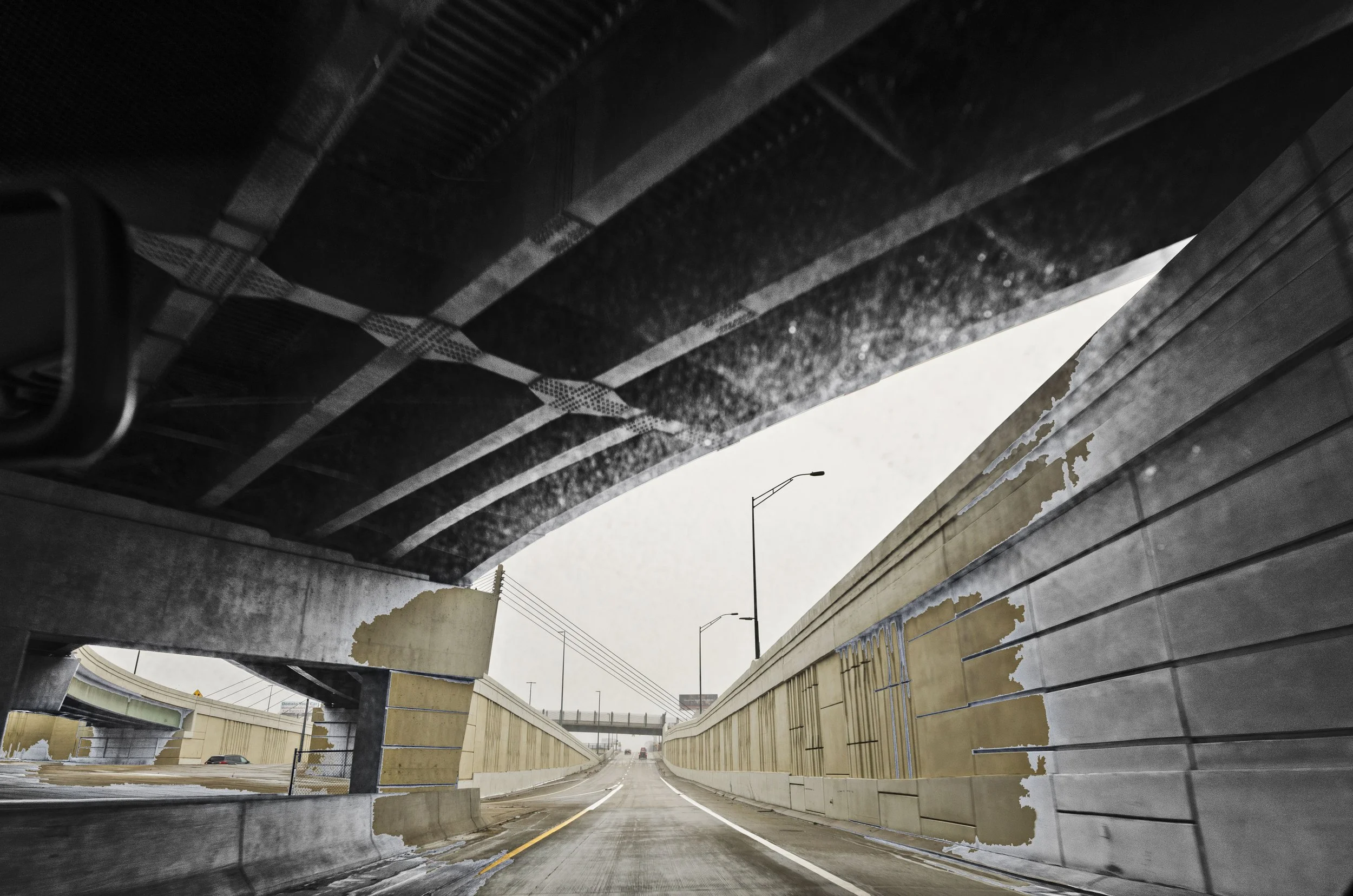
ramp off I-75 North
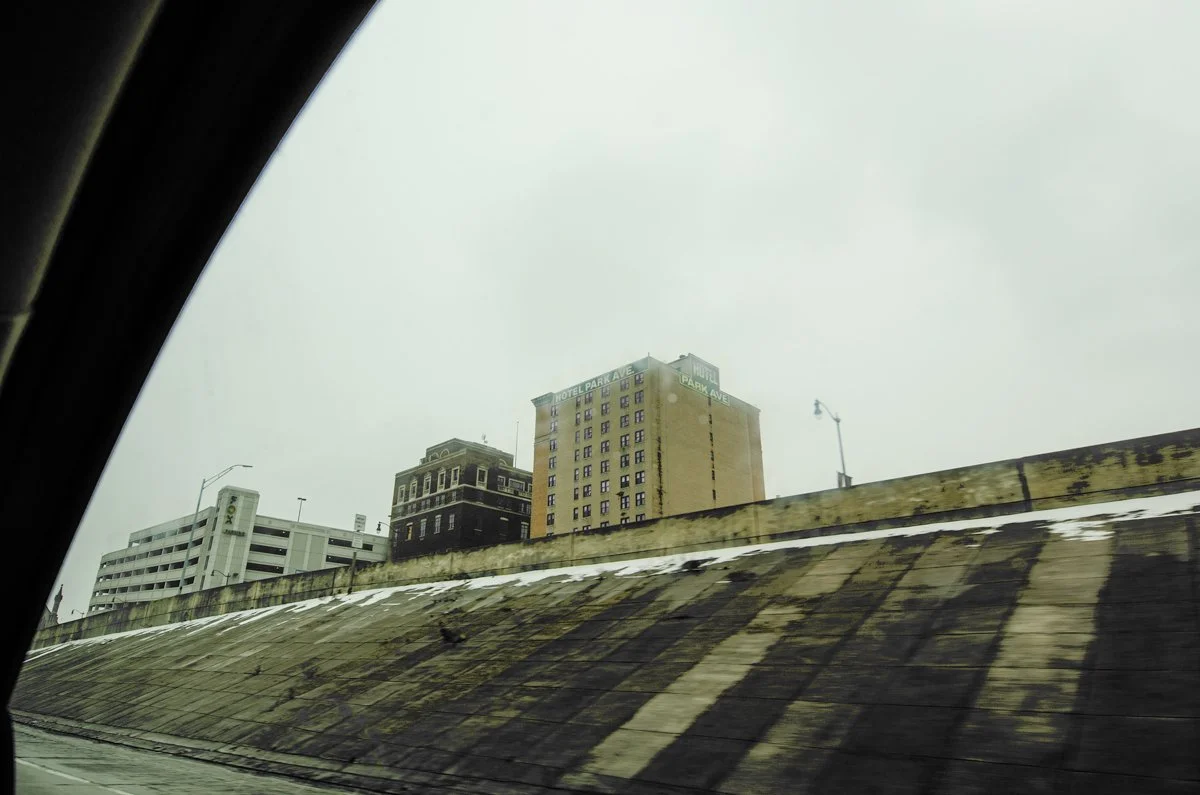
I-94 West, almost downtown
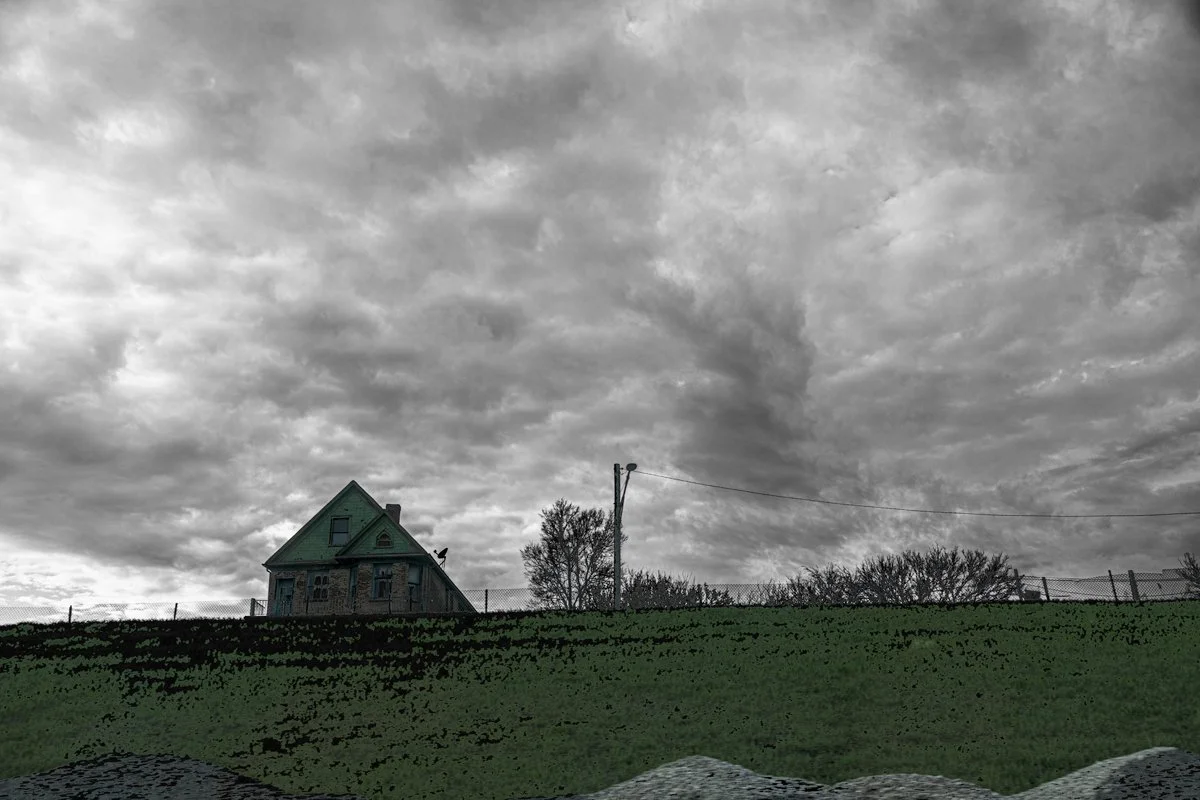
I-94 North, green house
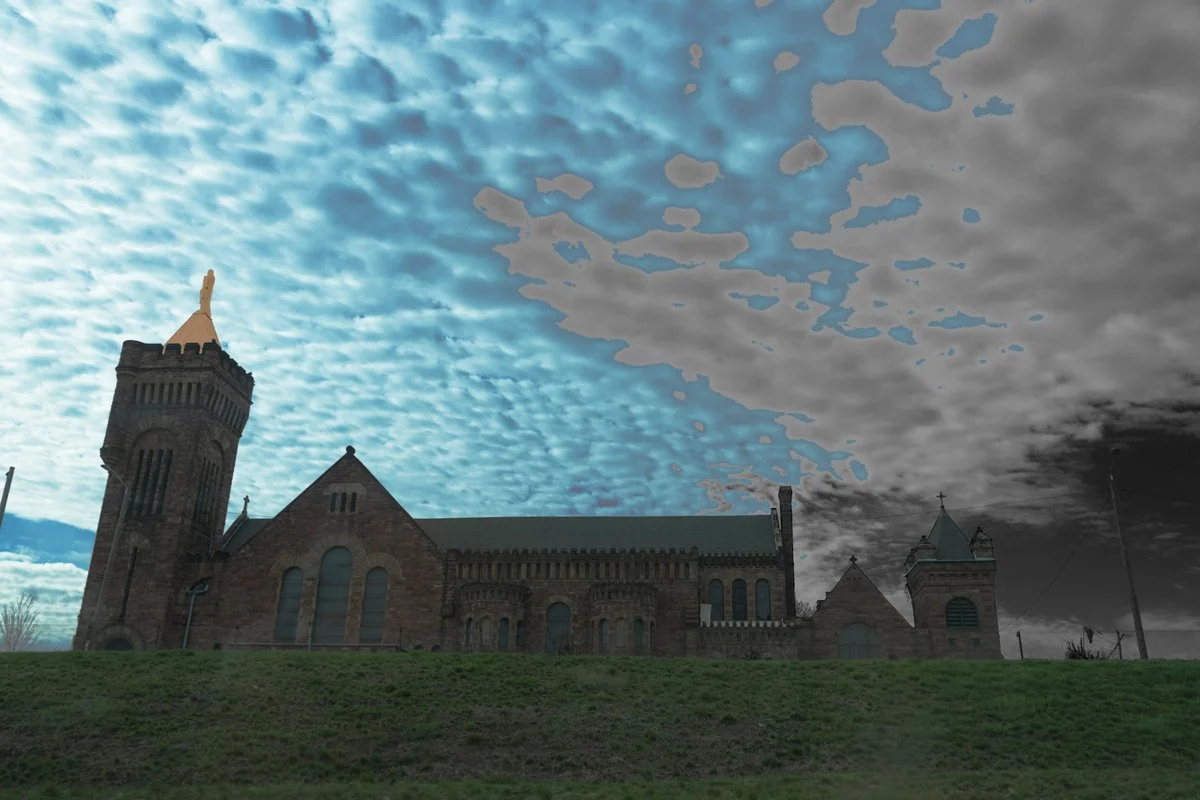
I-94 West, Our Lady of the Rosary

Gratiot Ave., anonymous motel
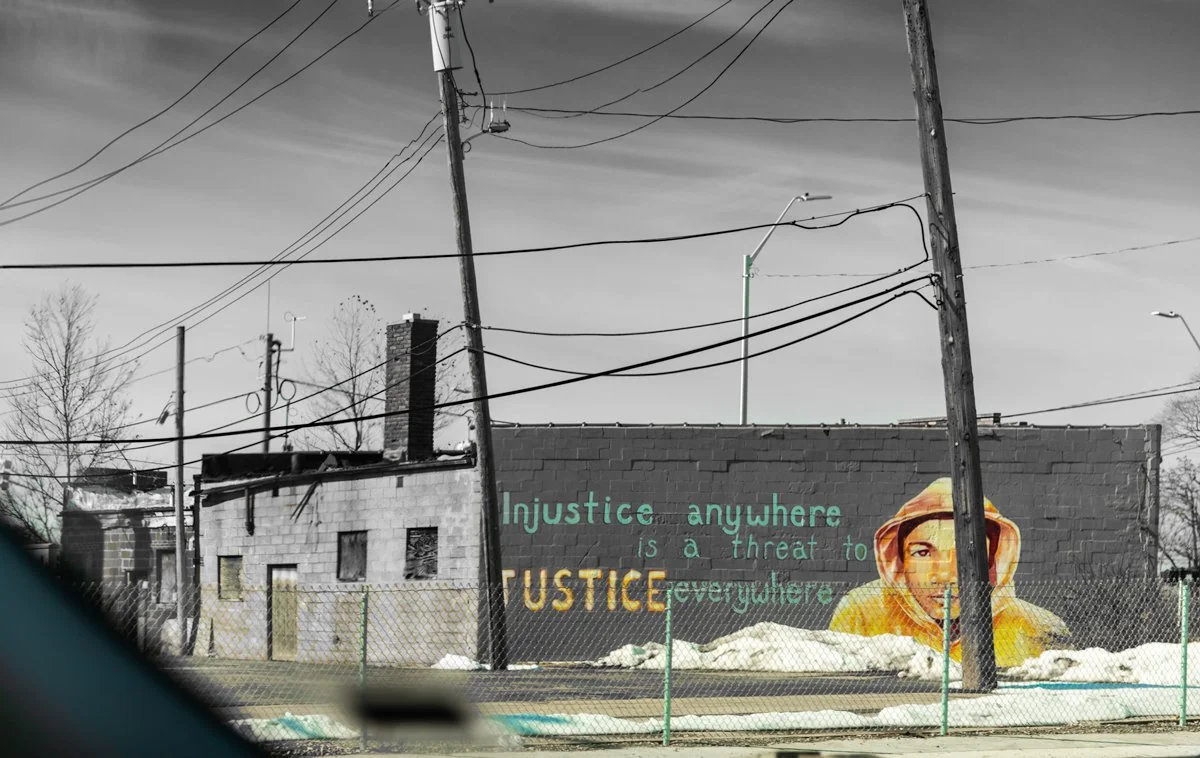
of Gratiot Ave., justice
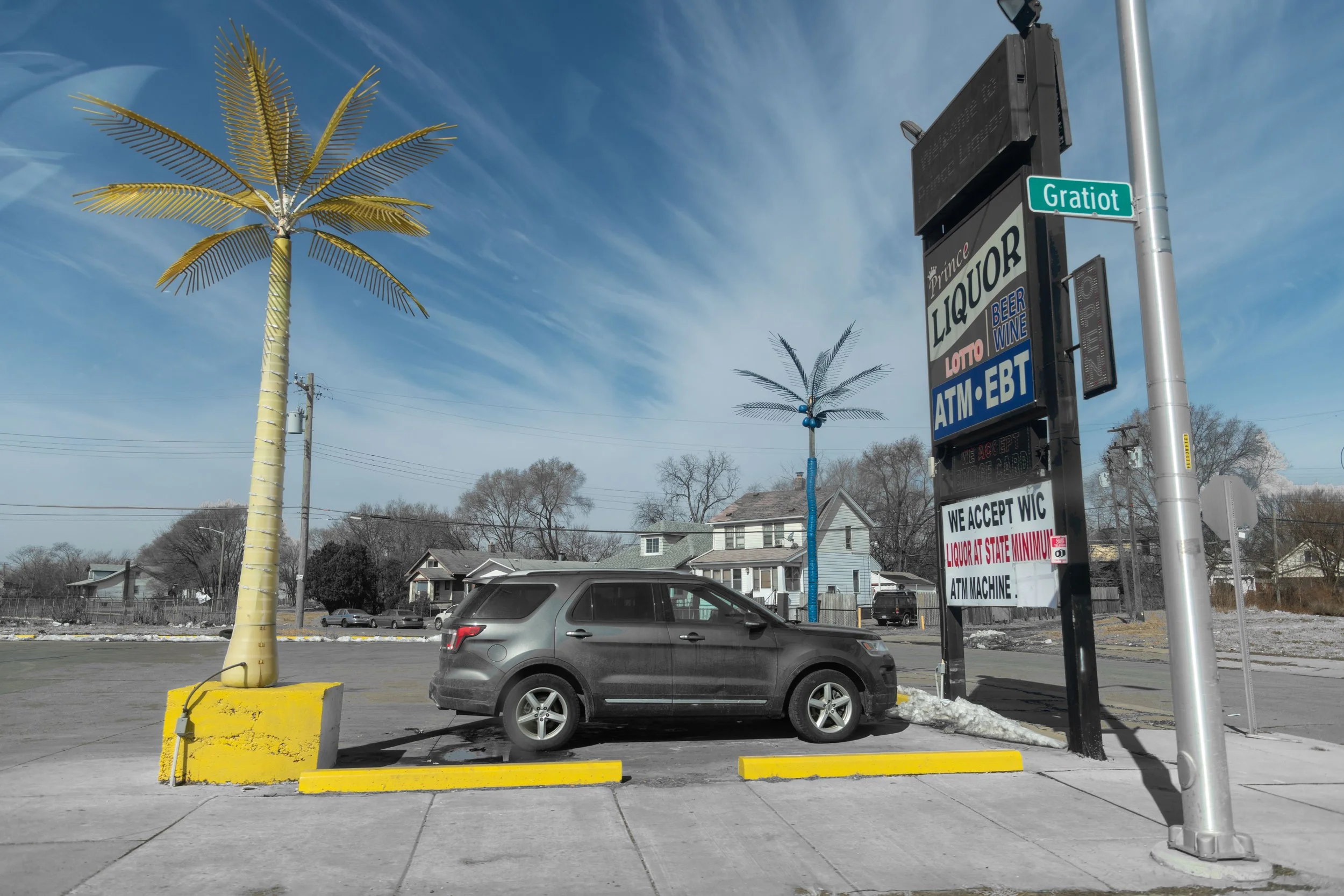
Gratiot Ave., palms
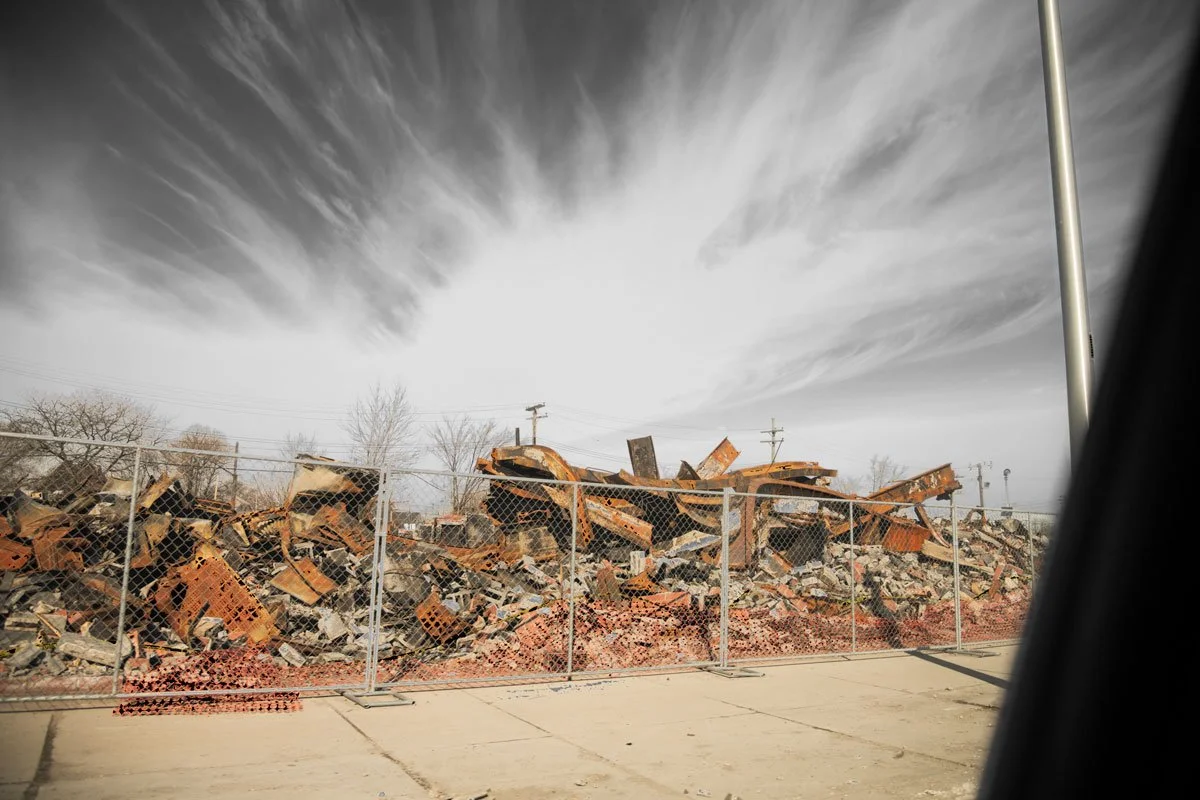
off Gratiot Ave., scrap
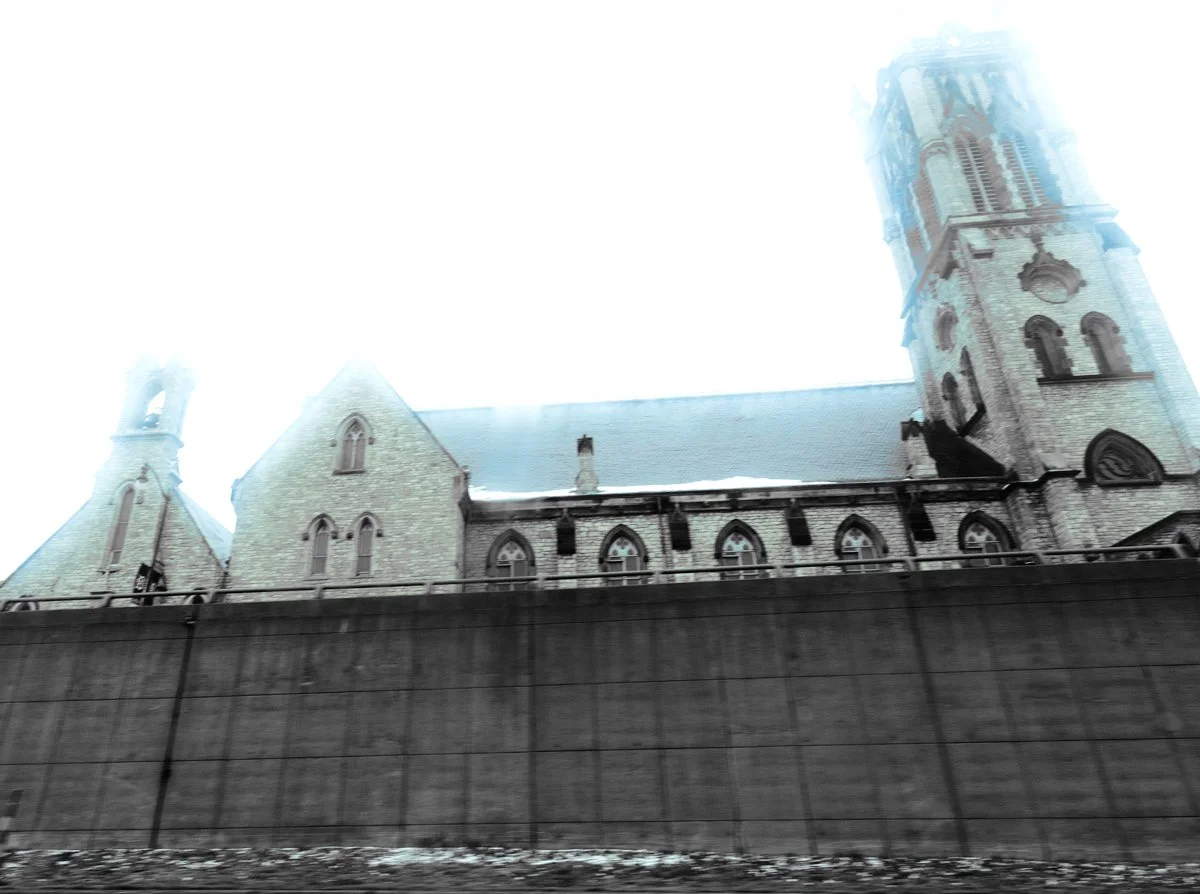
I-94 West, St. John the Divine
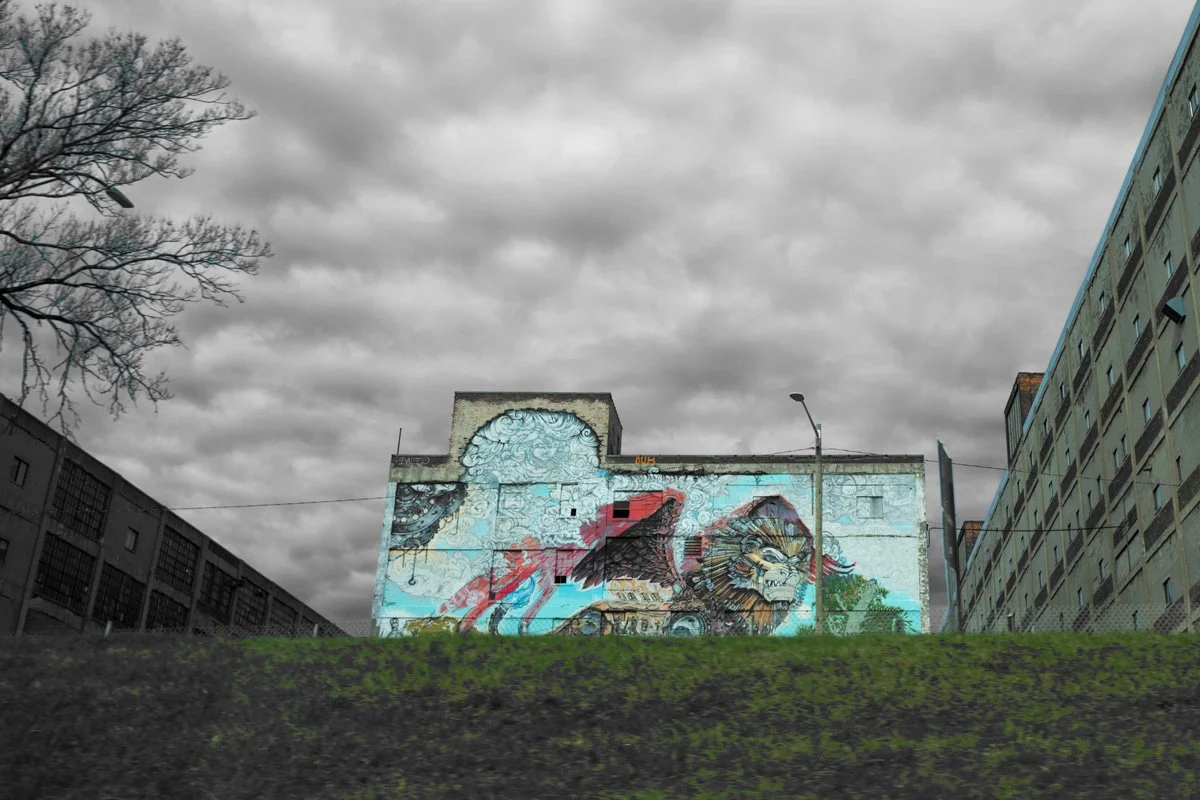
Chrysler Drive, I-75 North, Chimera
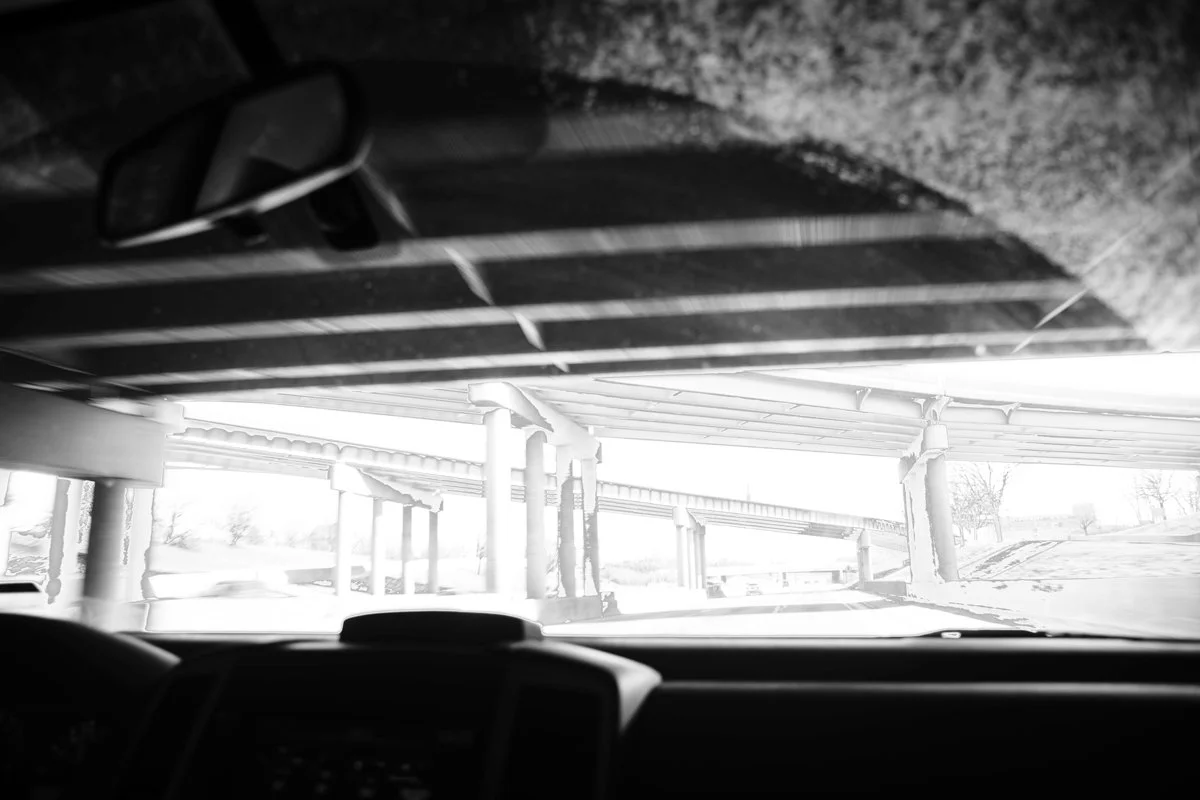
I-69 North

I-69 North
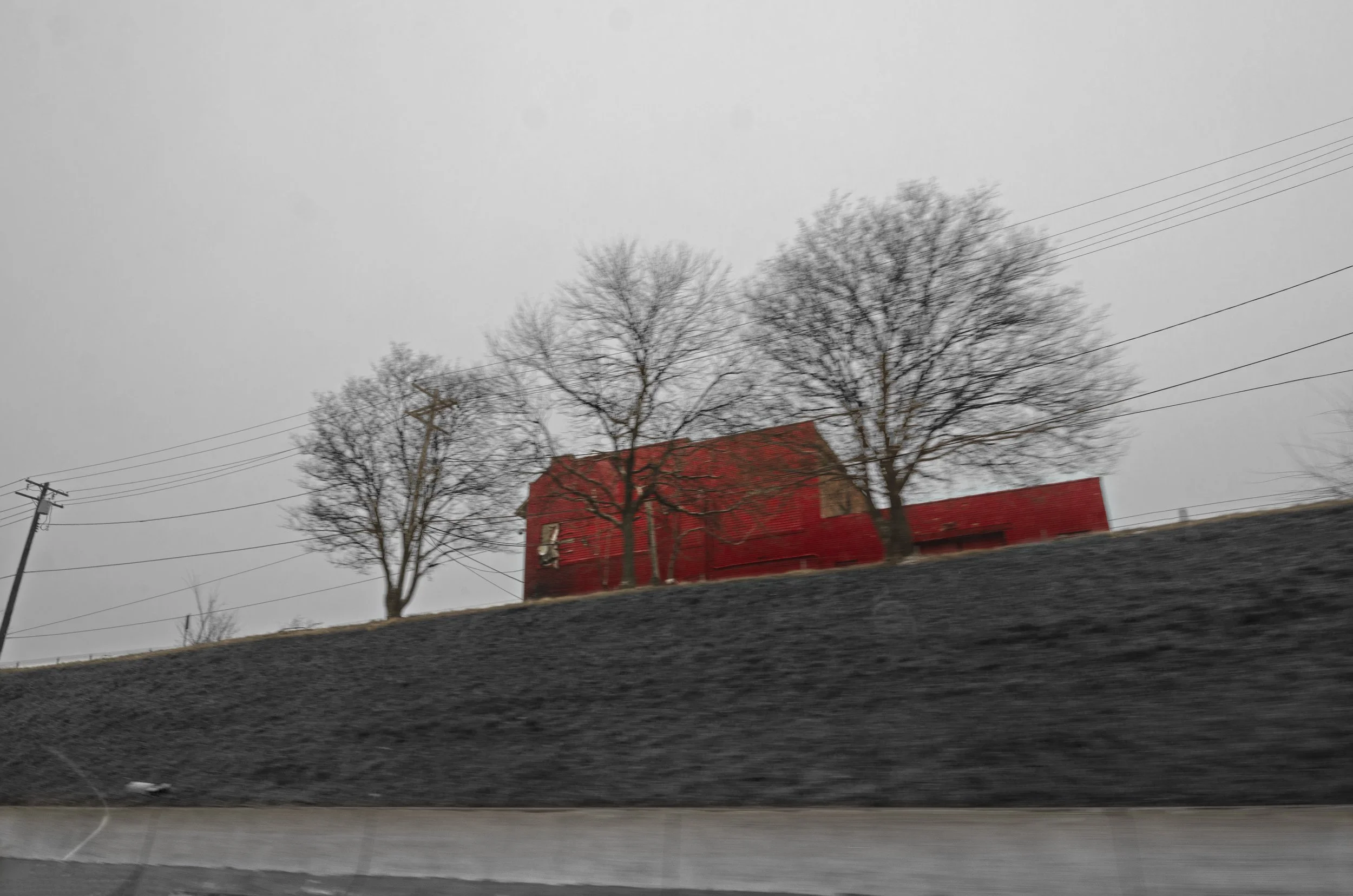
I-69 North, red house

M 10, exiting Detroit














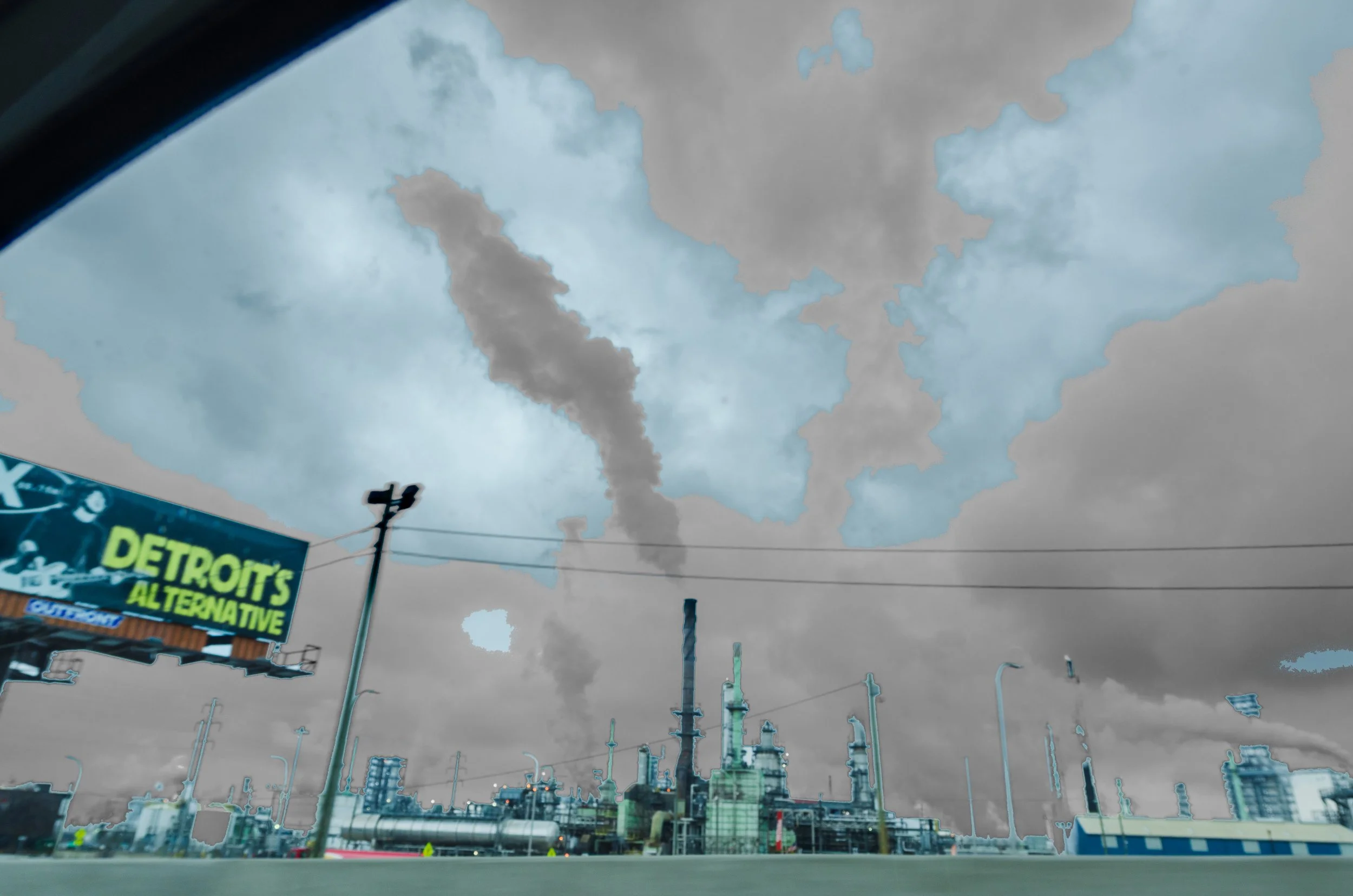







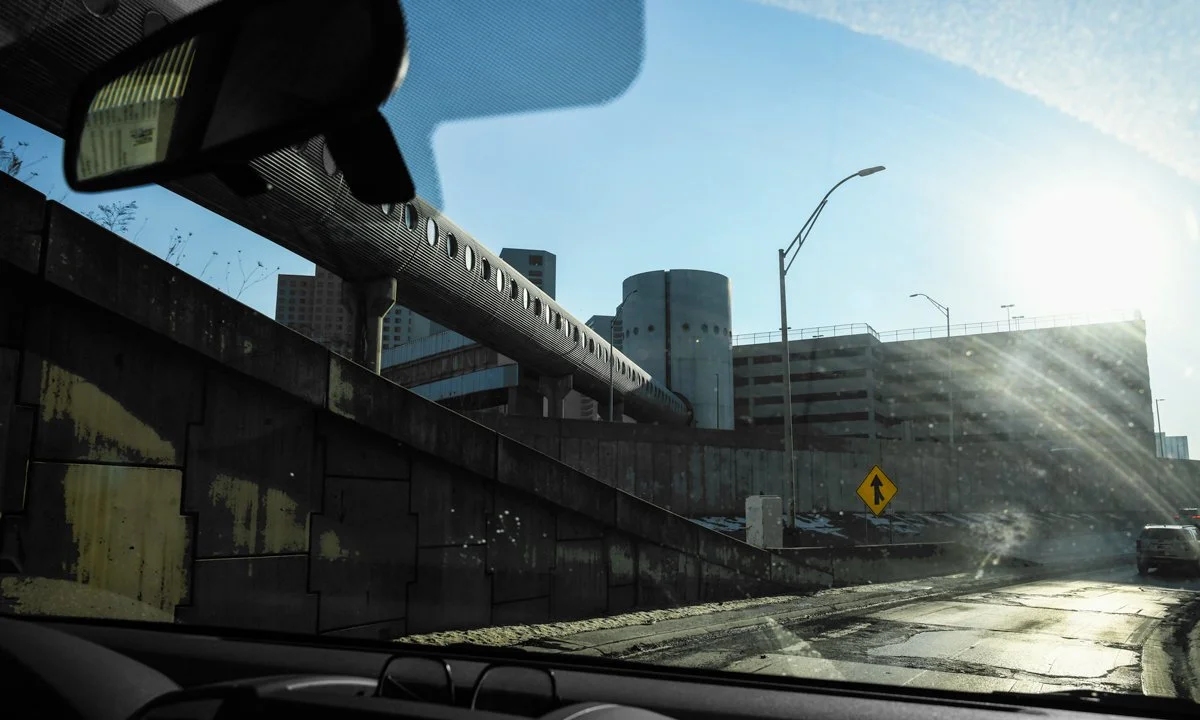


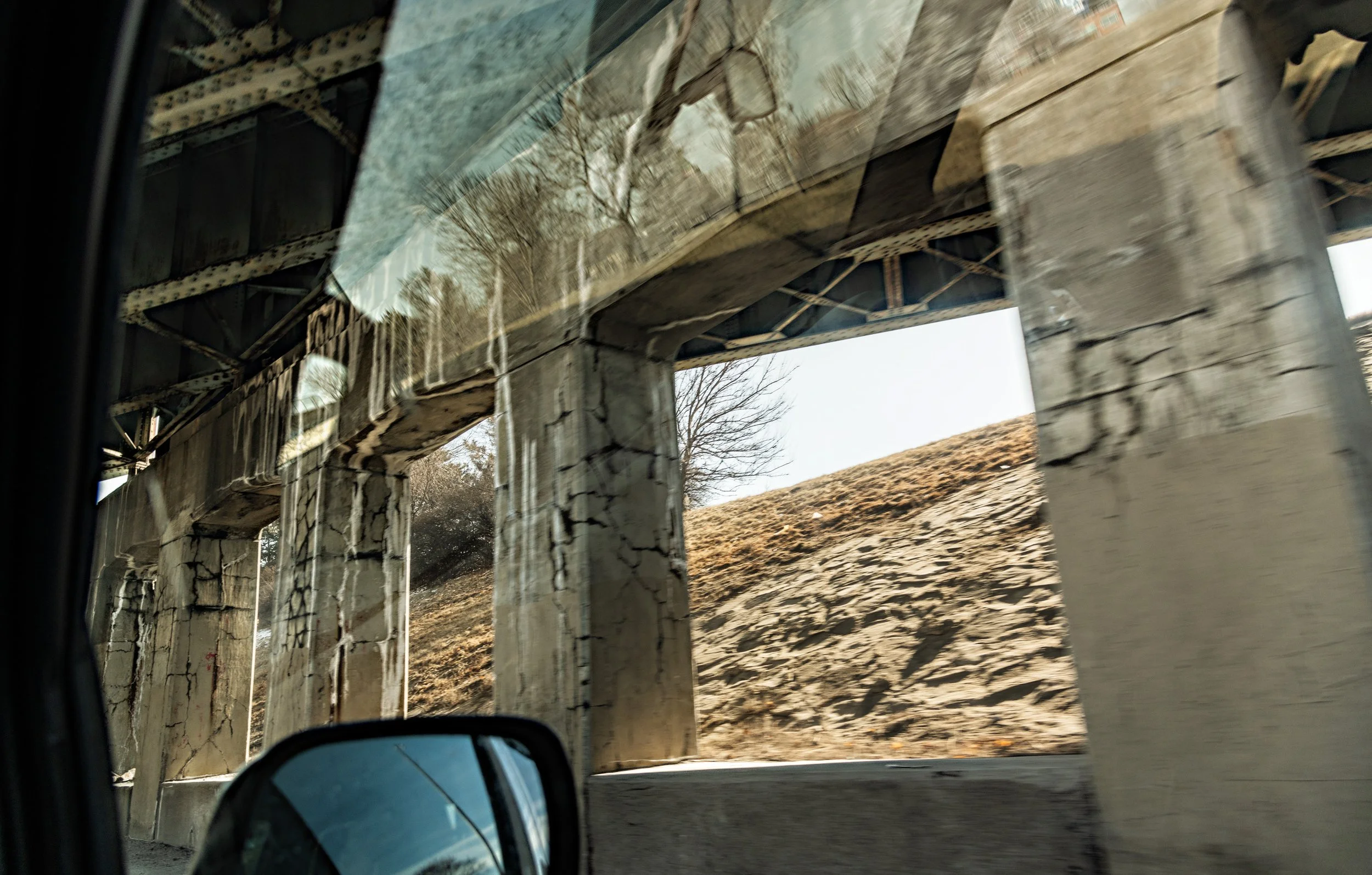



Detroit came to prominence in the first half of the twentieth century thanks to the monocultural hegemony of the
automotive industry, also the source of the city’s decades-long crisis. Its highway network reminds me of a hydraulic
system, which crisscrosses neighborhoods, often creating insurmountable obstacles in their midst. Flanked and
squeezed in by high banks, cars and trucks move along river bottoms, while small and large buildings run by swiftly
along the sides. When driving into city, the highways seem to move quickly toward you and then vanish into
uncontrollable curvilinear points of fugue.
I took photographs from the passenger seat, reacting instinctively to the stimuli that came from outside the vehicle.
I let Photoshop turn parts of the images into black and white, while leaving others in color. The algorithms play the
“third eye”, thus reproducing the experience of looking at fast-moving objects: some capture our attention, while
others are barely noticed.
The result is a highly selective but revealing portrait of Detroit, which we “imagine” beyond the highways/river
banks, road signals, billboards, tall or low buildings and electrical wires that dominate our immediate surroundings
and loom over us from above.